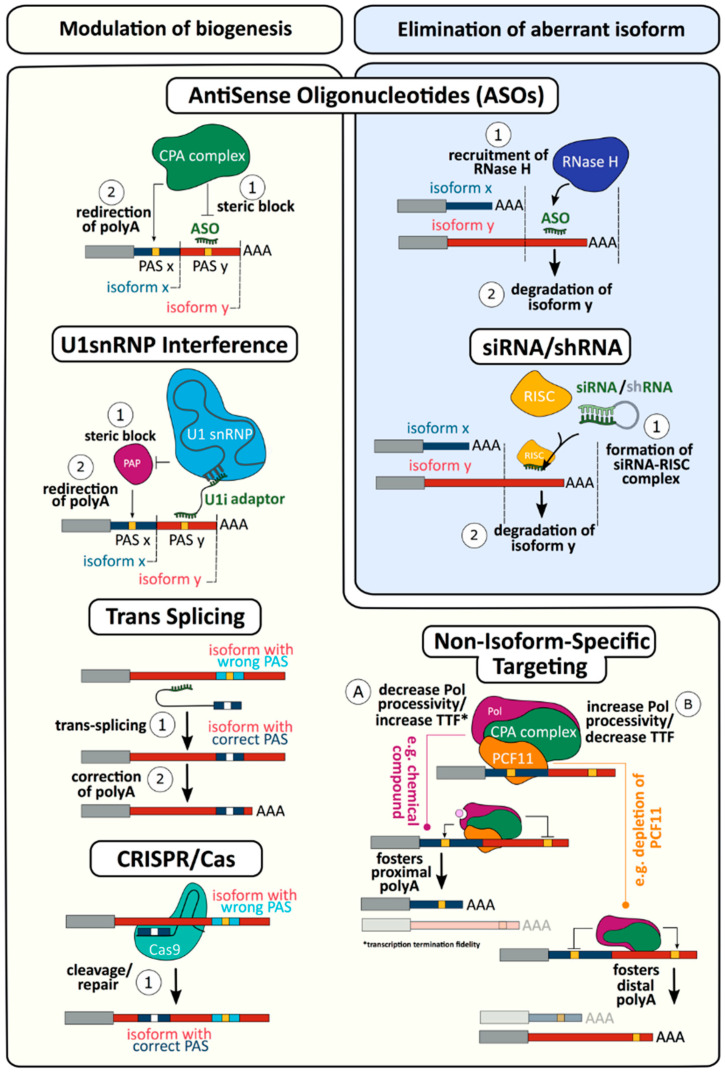Figure 5.
CPA/APA and therapy. Different approaches and mechanisms to correct deregulated APA through modulation of biogenesis and/or elimination of faulty isoforms. Antisense Oligonucleotides (ASOs): A designed sequence of oligonucleotides anneals a target region, leading alternatively to the steric block of the CPA complex or recruitment of RNAseH and subsequent degradation. The choice of one mechanism over the other depends on the generation of nucleotides used. U1snRNP interference: A bifunctional U1 adaptor is designed to anneal simultaneously to the 5′ end of U1snRNP and to the target sequence. The steric block induced by the complex redirects PAP to a different PAS. Trans Splicing: The therapeutic agent comprises a binding domain complementary to the target pre-mRNA, an unpaired oligonucleotide spacer and a coding domain containing the sequences to be trans-spliced into the target. This structure enhances specific trans-splicing of the target pre-mRNA, which competes with the cellular cis-splicing (which would bring the “pathological” mRNA) by creating a chimeric RNA molecule. The exogenous sequence carried by the structure is subsequently incorporated in the mature transcript, downstream enabling the biosynthesis of a significant amount of the corrected protein. CRISPR/Cas9: By means of Cas9 enzyme, the isoform containing the wrong PAS can be edited, inserting a new sequence containing the correct PAS. siRNA/shRNA: The administered siRNA/shRNA, after being processed in the nucleus, is loaded on RISC. The nucleotide strand directs RISC to the target mRNA leading to degradation or silencing of the complex. Non-isoform-specific targeting: The choice of one isoform over the other can be fostered, interfering with the CPA machinery. (A) Administration of chemical compounds targeting PolII can decrease processivity of the enzyme and increase transcription termination fidelity. Contrary to that, (B) depletion of specific components of the machinery (e.g., PCF11) leads to an opposite result. Interference based on “component-targeting” rather than “isoform-targeting” reflects into widespread changes eliciting possible side effects.

